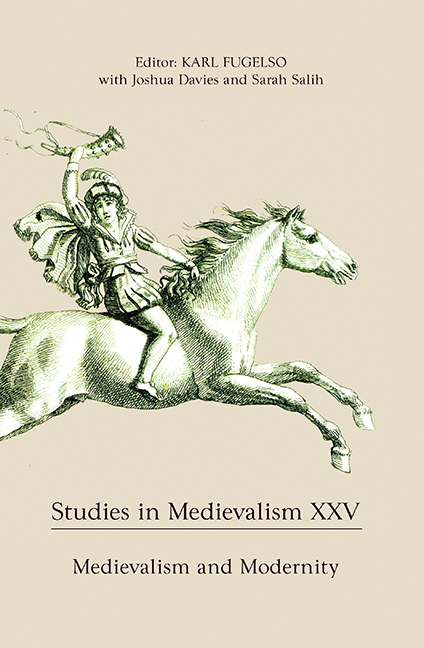432 results
Australian square kilometre array pathfinder: I. system description
- Part of
-
- Journal:
- Publications of the Astronomical Society of Australia / Volume 38 / 2021
- Published online by Cambridge University Press:
- 05 March 2021, e009
-
- Article
-
- You have access
- HTML
- Export citation
Demographic and clinical variables associated with response to clozapine in schizophrenia: a systematic review and meta-analysis
-
- Journal:
- Psychological Medicine / Volume 51 / Issue 3 / February 2021
- Published online by Cambridge University Press:
- 19 February 2021, pp. 376-386
-
- Article
-
- You have access
- Open access
- HTML
- Export citation
The Rapid ASKAP Continuum Survey I: Design and first results
- Part of
-
- Journal:
- Publications of the Astronomical Society of Australia / Volume 37 / 2020
- Published online by Cambridge University Press:
- 30 November 2020, e048
-
- Article
-
- You have access
- HTML
- Export citation
In-Field Movement of Glyphosate-Resistant Palmer Amaranth (Amaranthus palmeri) and Its Impact on Cotton Lint Yield: Evidence Supporting a Zero-Threshold Strategy
-
- Journal:
- Weed Science / Volume 62 / Issue 2 / June 2014
- Published online by Cambridge University Press:
- 20 January 2017, pp. 237-249
-
- Article
- Export citation
The Australian Square Kilometre Array Pathfinder: Performance of the Boolardy Engineering Test Array
- Part of
-
- Journal:
- Publications of the Astronomical Society of Australia / Volume 33 / 2016
- Published online by Cambridge University Press:
- 09 September 2016, e042
-
- Article
-
- You have access
- HTML
- Export citation
Contents
-
- Book:
- Studies in Medievalism XXV
- Published by:
- Boydell & Brewer
- Published online:
- 05 July 2016
- Print publication:
- 21 June 2016, pp vii-viii
-
- Chapter
- Export citation
II - Medievalist Visions
-
- Book:
- Studies in Medievalism XXV
- Published by:
- Boydell & Brewer
- Published online:
- 05 July 2016
- Print publication:
- 21 June 2016, pp 45-46
-
- Chapter
- Export citation
Volume XXV 2016
-
- Book:
- Studies in Medievalism XXV
- Published by:
- Boydell & Brewer
- Published online:
- 05 July 2016
- Print publication:
- 21 June 2016, pp x-x
-
- Chapter
- Export citation
Frontmatter
-
- Book:
- Studies in Medievalism XXV
- Published by:
- Boydell & Brewer
- Published online:
- 05 July 2016
- Print publication:
- 21 June 2016, pp i-iv
-
- Chapter
- Export citation
I - Medievalism and Modernity: Some Perspective(s)
-
- Book:
- Studies in Medievalism XXV
- Published by:
- Boydell & Brewer
- Published online:
- 05 July 2016
- Print publication:
- 21 June 2016, pp xvii-xviii
-
- Chapter
- Export citation
Acknowledgments
-
- Book:
- Studies in Medievalism XXV
- Published by:
- Boydell & Brewer
- Published online:
- 05 July 2016
- Print publication:
- 21 June 2016, pp vi-vi
-
- Chapter
- Export citation
Miscellaneous Endmatter
-
- Book:
- Studies in Medievalism XXV
- Published by:
- Boydell & Brewer
- Published online:
- 05 July 2016
- Print publication:
- 21 June 2016, pp 219-219
-
- Chapter
- Export citation
Studies in Medievalism
-
- Book:
- Studies in Medievalism XXV
- Published by:
- Boydell & Brewer
- Published online:
- 05 July 2016
- Print publication:
- 21 June 2016, pp v-v
-
- Chapter
- Export citation

Studies in Medievalism XXV
- Medievalism and Modernity
-
- Published by:
- Boydell & Brewer
- Published online:
- 05 July 2016
- Print publication:
- 21 June 2016
Editorial Note Karl Fugelso
-
- Book:
- Studies in Medievalism XXV
- Published by:
- Boydell & Brewer
- Published online:
- 05 July 2016
- Print publication:
- 21 June 2016, pp xi-xvi
-
- Chapter
- Export citation
Contributors
-
- Book:
- Studies in Medievalism XXV
- Published by:
- Boydell & Brewer
- Published online:
- 05 July 2016
- Print publication:
- 21 June 2016, pp 215-218
-
- Chapter
- Export citation
List of Illustrations
-
- Book:
- Studies in Medievalism XXV
- Published by:
- Boydell & Brewer
- Published online:
- 05 July 2016
- Print publication:
- 21 June 2016, pp ix-ix
-
- Chapter
- Export citation
Contributors
-
-
- Book:
- The Cambridge Dictionary of Philosophy
- Published online:
- 05 August 2015
- Print publication:
- 27 April 2015, pp ix-xxx
-
- Chapter
- Export citation
The Australian Square Kilometre Array Pathfinder: System Architecture and Specifications of the Boolardy Engineering Test Array
-
- Journal:
- Publications of the Astronomical Society of Australia / Volume 31 / 2014
- Published online by Cambridge University Press:
- 13 November 2014, e041
-
- Article
-
- You have access
- Open access
- HTML
- Export citation
Science with the Australian Square Kilometre Array Pathfinder
- Part of
-
- Journal:
- Publications of the Astronomical Society of Australia / Volume 24 / Issue 4 / 2007
- Published online by Cambridge University Press:
- 05 March 2013, pp. 174-188
-
- Article
-
- You have access
- Export citation









